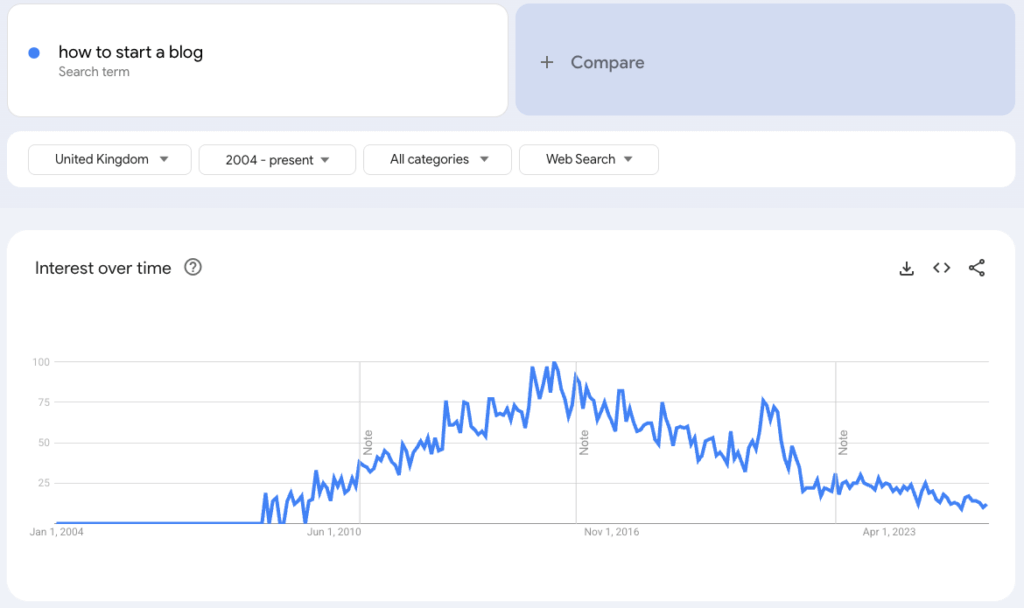The web’s original deal… and how AI broke it
In the mid-1990s the implicit handshake at the heart of the open web was simple: publishers gave crawlers their content for free, and search engines sent them traffic in return. That traffic – people, not bots – monetised the publisher via ads, subscriptions, or sales. Everybody won.
Fast-forward to 2025 and that bargain is frayed. Google’s results pages now surface answers directly, reducing outbound clicks; generative AI assistants scrape trillions of tokens yet seldom attribute; and organic impressions translate into far fewer visits than even three years ago. In short, the click-back economy has died.
Cloudflare’s decision on “Content Independence Day” to let any site charge AI crawlers or block them by default is the loudest signal yet that publishers feel the old model is broken. It puts a price tag on something that had been implicitly free for nearly three decades.

Cloudflare’s pay-per-crawl framework
Cloudflare sits in front of a significant slice of the internet’s domains (ours included; we love Cloudflare). Its new edge feature lets a site owner:
- Set a per-URL price for non-human crawlers.
- Return
HTTP 402 Payment Requiredif the crawler refuses that price. - Accept a crawl automatically when the bot includes a
crawler-exact-price(orcrawler-max-price) header equal to or above the owner’s figure, responding withHTTP 200and acrawler-chargedreceipt . - Reject or throttle crawlers that omit pricing headers, effectively blocking “scrape first, ask forgiveness later” behaviour .
Although framed as an experiment, this is the first mainstream implementation of the long-theorised paid crawling concept—one that turns web content into an API-like resource with metered billing.
Why this matters for SEO & organic discovery
Cloudflare’s move to charge AI crawlers changes some of the fundamental levers that have underpinned SEO for decades.
Unlimited crawling budgets are over
The old world:
Googlebot and other crawlers could freely index most of the web, with the only practical limit being how much crawl budget they allocated to your domain. As long as your technical SEO was sound, you could count on eventually being crawled and indexed.
What’s changing:
In a pay-per-crawl environment, bots may triage what they can afford to fetch. Low-value, thin, or duplicative pages might simply never be seen, because the crawler decides the cost outweighs the benefit.
Big-picture implication:
Technical SEO will evolve from just “make it crawlable” to “make it worth paying to crawl.” Content quality and perceived value could directly influence whether it even makes it into search indexes or AI models.
Backlinks will matter even less
The old world:
Although it’s always seemed arbitrary & easily manipulated, links have long been the cornerstone of authority. They told search engines your content was credible and worth ranking.
What’s changing:
Now, a willingness to pay becomes a key signal. If an engine or AI model invests real budget to crawl and license your content, it may indicate that your content holds unique value.
Big-picture implication:
Paid crawl budgets could start blending into broader marketing spend, meaning you might soon have a stake in how much exposure you buy for content, just as they do for paid media campaigns.
Free data for LLM training is drying up
The old world:
Large language models (LLMs) trained on vast swaths of internet content, most of it scraped without direct compensation to the creators. Your content helped build their capabilities, often without you knowing.
What’s changing:
As content becomes gated by licensing costs, AI providers may face “Swiss-cheese-style” knowledge gaps if they can’t afford or negotiate rights to the most authoritative data.
Big-picture implication:
Brands with proprietary data—think unique research, pricing indices, or industry reports—suddenly have real leverage. You can decide whether, how, and for how much your data powers future AI outputs.
Rankings measured by clicks may fade
The old world:
SEO success was all about generating revenue from organic clicks.
What’s changing:
If more AI assistants start answering questions directly (drawing on paid, licensed content) then value shifts to impressions of your brand-derived insights within those AI answers, or even royalties tied to snippet usage.
Big-picture implication:
Success metrics will migrate from traffic to licensed usage and visibility within generative outputs. It’s a subtle but seismic shift: your brand might influence thousands of buying decisions without generating a single site visit.
Rethinking how we measure content success
For marketers, this all means rethinking two foundational ideas:
Traffic as a primary KPI.
Visibility, brand mentions, and authoritative references, even inside AI summaries, could soon be more impactful than raw session counts.
Cost of content distribution.
Expect budget lines to appear for “AI crawler licensing,” much like you already budget for Google Ads or paid social. It’s another lever to control reach – only this time, applied to discovery engines themselves.
Cloudflare’s pay-per-crawl model signals that the economics of discovery are changing. As a business, it’s no longer just about creating content that’s technically optimised – you need to create content that’s valuable enough for crawlers to pay for.
What could the web look like in 2030?
Tiered Discovery Layers
Public commons — CC-BY or similar licensing, free to crawl.
Metered layer — paid, but with rate-cards published in robots.txt.
Private enclaves — zero crawl, available only via first-party search.
Search Engines as Marketplaces
Google-style indexes broker deals in real time: a crawler bids, an owner auto-accepts or counters, and the article is pulled into the model with a smart contract.
SEO Becomes “Content Supply-Chain Management”
Optimising titles and schema remains, but now SEOs must also:
- Negotiate crawl pricing with aggregators.
- Strategically decide which portions of a site sit behind a pay-per-crawl gateway.
- Track licence-attributed impressions inside LLM responses.
Questions that pay-per-crawl creates:
What is the minimum viable exposure your brand needs?
Give away evergreen explainers, but protect premium research?
How will you value a bot impression vs. a human visit?
Could licensed snippets inside an AI assistant drive more pipeline than top-of-funnel blog traffic?
Do you own data unique enough to monetise?
Proprietary benchmarks, first-party research, pricing indices, or design assets may command higher crawl fees.
Are your technical teams ready to implement pay-per-crawl headers?
Even if you start at $0, having the plumbing in place positions you to adjust later & not get left behind giving your content away for free.
Closing Thoughts
Cloudflare’s move doesn’t end free crawling overnight, but it renegotiates the web’s social contract. If publishers can set prices, and crawlers can choose to pay or walk away, then value flows more transparently, and content finally gains the API-like monetisation its creators have long sought.
For SEO and digital marketing teams, the takeaway is clear: discovery will still matter, but the currency is changing. Winning brands will be the ones that treat content not just as a traffic magnet but as an asset with configurable market rates, deciding intentionally what to leave open, what to meter, and how to measure success when a “visit” may no longer be the goal.


